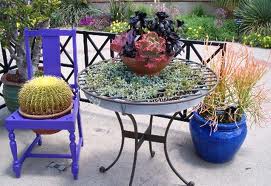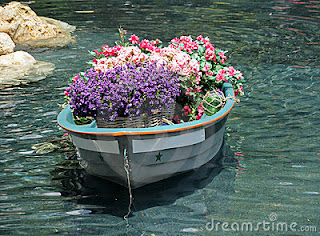Millions of pounds of wet grounds, filters and bags are thrown in the trash. Use coffee by-products in the garden and farm as follows:
Sprinkle used grounds around plants before rain or watering, for a slow-release nitrogen. A great natural plant fertilizer.
Add to compost piles to increase nitrogen balance. Coffee filters and tea bags break down rapidly during composting.
Dilute with water for a gentle, fast-acting liquid fertilizer. Use about a half-pound can of wet grounds in a five-gallon bucket of water; let sit outdoors to achieve ambient temperature.
Mix into soil for houseplants or new vegetable bed.
Encircle the base of the plant with a coffee and eggshell barrier to repel pests.
If you are into vermi-posting, feed a little bit to your worms .
Other ways of making use of your everyday household things into practical and useful reinvention:
Used CDs
Glue two discs together with shiny sides face out and string together through the middle hole as you would a wind chime. Hang and the shimmering reflections will scare off thieving birds and raccoons.
Pantyhose
Put a cake of soap in the foot when camping and tie the top end to a low-hanging tree branch. Cut into strips as a gentle way to tie plants securely to stakes. Cut across the leg to make rings, roll them up for a stretchy ponytail holder that won't break and damage hair like rubber bands do. Put some human hair clippings into toe of the stocking and place around the garden fence to keep deer away.
Small Plastic or Paper Objects for Starting Seeds
Small plastic and paper containers can be used for starting seeds indoors. Repurposing yogurt containers, egg cartons, and toilet paper rolls provides perfect containers for holding soil and starting small plants from seeds. Fill the containers with soil. Add 2-3 seeds to each container to ensure that one plant germinates in each container.
Seeds and Water
Most fruits and vegetables contain seeds that can be put to use in next year's garden. Save seeds from produce by washing them and allowing them to dry. You can store them in the freezer if you are not yet ready to germinate them in spring.
You can repurpose rainwater from the gutters. Barrels, unwanted plastic storage bins, and old trash containers can all be repurposed for storing rainwater collected from gutters and down spouts.
Cardboard,egg cartons, toilet paper, newspaper,paper bags
Fill the egg cartons with soil, plant your seeds. When it is planting time, cut the individual “egg cups” apart and plant the whole thing into the prepared hole. The cardboard will eventually decompose and hold valuable moisture around the plants.
Toilet paper/paper towel rolls
Cut the rolls into rings 3-4 inches tall. Place them on a cookie sheet, fill them with dirt and plant your seeds. When you are ready to transplant the seedlings, use a spatula to lift them off the cookie sheet and bury into the garden without removing the rolls. They are biodegradable anyway.
Newspapers
Make your own small seedling pots out of newspaper using a tin can or glass jar as molds.
Brown Paper Bags
Tightly twisted bags make good fire starters with more staying power than newspaper. Or slit, poke holes throughout and use to line your flower garden before adding mulch or potting soil to reduce weeds and serve as a natural mulch.
Plastic Milk Jug
Turn into a watering can with a few holes punched into the plastic cap. Cut off the top and fill with bird seed. You can also use the old pop or soda bottles to start seedlings and will also look good for flowing flowers.
Fill the containers with dirt and use them plants. Stab small holes so water will not get stagnated.


































